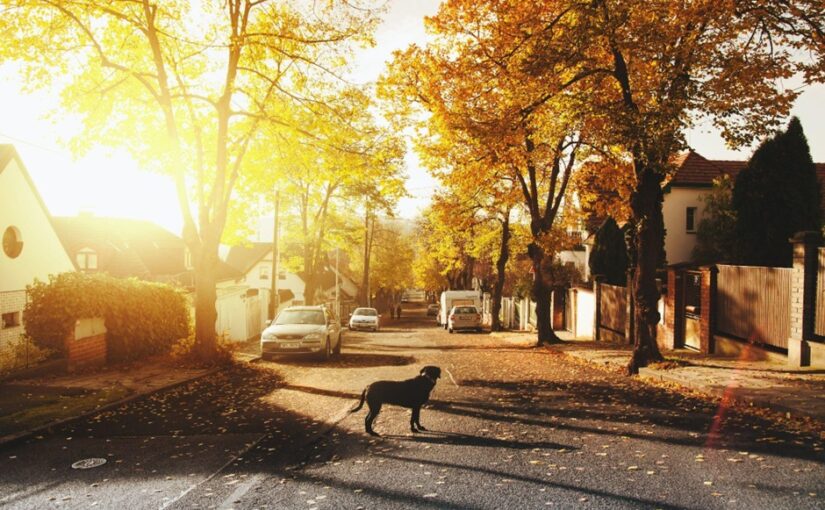The worst case scenario for any dog owner is losing their dog. The stress and worry that this situation causes is a nightmare for any owner who loves and cares for their pet. But let’s take a moment to think about the reverse of that situation: what if you find a lost dog? What do you do to help make sure that they make it back to their owner?
When you find a lost dog, your actions can make a significant difference in the life of the animal and potentially reunite it with its worried owner. Understanding the right steps to take is crucial for ensuring the dog’s safety and well-being.
Immediate Actions
When you first encounter a lost dog, approach it with caution. A dog in unfamiliar surroundings may be scared or defensive. Speak gently and avoid direct eye contact initially, as this can be perceived as a threat by some dogs.
Ensure that the dog is not in immediate danger, such as from traffic or other hazards. If necessary, gently guide it to a safer area.
Observe the dog’s physical condition. Does it appear injured, malnourished, or dehydrated? Such observations are vital for understanding the urgency of the situation.
If you spot the dog and they are trapped or in immediate danger, do not put yourself in harm’s way to reach them – that can result in the two of you needing rescue, instead of just the dog. A better approach in that case is to seek help from animal rescue experts who can free the dog with less risk of injury.
If the dog seems approachable, try to secure it with a leash or in a fenced area. If you don’t have a leash, a piece of cloth or rope can be a temporary solution.
However, if the dog is aggressive or extremely fearful, maintain a safe distance and consider contacting local animal services for assistance.
If it’s safe to get close, check for any form of identification, such as tags, that might be on the dog’s collar. This could provide direct contact information for the owner. This is the best case scenario, and you may be able to get the dog home almost immediately.
Searching for the Owner
If the dog has a tag with contact information, call or email the owner immediately. If there’s an address, consider visiting the address if it’s in your vicinity. However, if there are no tags or other readily-visible identification, then there are other steps you can take.
Scan for a Microchip
Many pets have microchips embedded under their skin. Local veterinarians, animal shelters, or some police stations have the equipment to scan for these chips and retrieve the owner’s contact information.
Leverage Social Media and Community Networks
Create a post on social media platforms and community forums with a picture of the dog and where it was found. Local community groups can be incredibly effective in spreading the word.
Create ‘Found Dog’ Posters
In addition to digital efforts, physical posters in the area where the dog was found can be helpful. Include a clear photo, a brief description, and your contact information.
Contact Local Animal Shelters and Vets
Inform local adoption shelters, rescue organisations, and veterinary clinics about the found dog. Sometimes owners will contact these places when searching for their lost pet. You may also get lucky and find the dog’s regular veterinarian, and they may recognise the missing pooch.
Legal and Ethical Considerations
Understand Your Legal Responsibilities
In many areas, there are legal obligations to report a found dog to local authorities. This is to ensure that the dog is properly accounted for and increases the chances of it being reunited with its owner.
Respect Privacy and Security
When posting information about the found dog, be mindful of your personal information and the privacy of the dog’s potential owner.
Ethical Treatment of the Animal
While in your care, it’s ethically imperative to treat the dog with kindness and provide for its basic needs, such as food, water, and shelter – do everything that you would do for your own pet, but prioritise keeping yourself and your family safe if the dog may be sick or aggressive.
Temporary Care and Safety
Provide Basic Needs
Ensure the dog has access to water and food. Use a mild dog food or boiled rice and chicken if the dog’s stomach is likely upset due to stress.
Create a Safe Space
Offer the dog a quiet and comfortable area to rest, away from high-traffic areas of your home.
Monitor Health and Behavior
Keep an eye on the dog’s health and behaviour. If you notice any signs of illness or distress, consult a veterinarian.
Interaction with Other Pets
If you have other pets, it’s best to keep them away until a veterinarian has examined the new dog and pronounced them clear of any contagious diseases or parasites. You may opt to keep them separated even with a clean bill of health, as you may not be sure how the lost dog will react to other animals.
Conclusion
Finding a lost dog places you in a position of responsibility and offers an opportunity to demonstrate compassion and civic duty. By taking the right steps, you can ensure the safety and well-being of the dog while making every effort to reunite it with its owner. Remember, identification methods like microchips and ID tags are crucial in these scenarios and are something every pet owner should consider.
Finding a lost dog is an unpredictable and often challenging experience, but with the right knowledge and approach, you can make a positive impact in the life of the animal and potentially bring joy to a worried pet owner.


